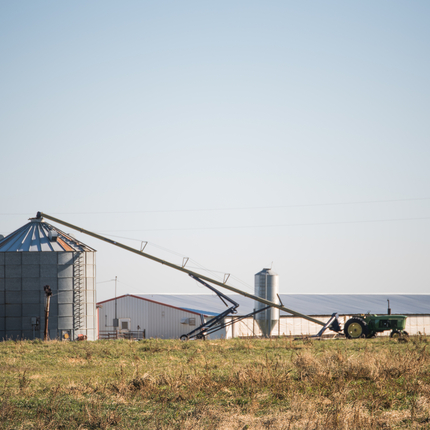By Andrea Hartman, former staff member. Para la versión en español de esta historia, por favor oprima aqui.
On April 5, the U.S. Department of Agriculture (USDA) reopened part of the Coronavirus Food Assistance Program (CFAP) for applications. This program, called CFAP 2, offers payments to farmers and ranchers based on the commodities in their inventory between April 16 and Aug. 31, 2020. CFAP is not a loan, but a form of stimulus given to farmers.
USDA currently has several different programs open for farmers and ranchers. Interested farmers and ranchers should contact their local Farm Service Agency (FSA) office to learn more about the programs available.
What if I’ve already participated in CFAP and CFAP 2?
Certain commodities have recently received payment increases. If a farmer or rancher has already applied for and received funds from CFAP 1 or CFAP 2 in 2020, they do not need to reapply in order to see these increases.
Two key types of commodities are receiving increased payment rates and FSA will automatically issue payments in the following manner:
- Farmers and ranchers who received cattle payments from CFAP 1 will see an increase in payments starting in April.
- Additional payments of $20/acre will be made to farmers of eligible crops, based on the acreage listed in their CFAP 2 applications. Crops include alfalfa, corn, sorghum, soybeans, sugar beets, wheat. Visit farmers.gov/cfap for a full list of eligible commodities.
Am I eligible if I haven’t participated in CFAP before?
Many farmers and ranchers are eligible to apply for CFAP 2 funds during this new application window, as eligibility is still based on the commodities they raise or grow. Commodities include fruits and vegetables (categorized as “specialty crops”), row crops, livestock, dairy, broilers and eggs. Even if a farmer or rancher has a small number of acres, livestock, or more unusual products, they are likely still eligible for the program.
Farmers and ranchers looking for more information about whether their crops or livestock are eligible should reference the list of commodities and payment levels at farmers.gov/cfap.
How much can I expect to receive?
Payments will go out under existing CFAP rules, which offered different payment structures based on type of commodity and their market impact from the pandemic. In CFAP 2, payments for many commodities were based on maximum inventory between April 16 and Aug. 31, 2020.
For fruit and vegetable farmers, payments are calculated by multiplying the value of 2019 sales by a given percentage level, roughly 10% of their 2019 revenue from those commodities.
How to apply?
- An online portal—farmers.gov/cfap/apply— has been set up to take applications. The website includes instructions for different forms of application.
- One-on-one support with the application process, is available by calling 877.508.8364. For those interested in working with their local office, it is best to call to set up an appointment. However, FSA recommends calling this number before talking with your local office.
Farmers and ranchers are able to sign up for CFAP 2 for at least 60 days after April 5. An end date will be announced at a later date. Sign up is on a first-come, first-served basis, so farmers and ranchers are encouraged to apply online or reach out to their local FSA office as soon as possible. Farmers and ranchers can find their local offices here.
What documentation is needed?
The USDA is accepting a wide variety of documentation from farmers and ranchers about what they produced in 2020. For those already registered with FSA, this documentation includes confirming what was planted on which field, acres (if different from what FSA has on file), and the plant date. Farmers and ranchers do not need to provide sales and inventory records, but must keep them for three years in case their application is selected for follow-up review.
Is there assistance for contract growers?
Certain contract growers, such as chicken and hog, are eligible for assistance under CFAP Additional Assistance (CFAP AA). Payments for contract growers are currently on hold, however, FSA is continuing to accept applications from interested producers.
Fruit and vegetable farmers who received Noninsured Crop Disaster Assistance Program (NAP), Wildfire and Hurricane Indemnity Program (WHIP), or crop insurance indemnities in 2019 can update their sales for 2019 through CFAP AA. By adding these dollars to their 2019 sales, fruit and vegetable farmers can receive an increased payment for their previous CFAP applications.
Are there other opportunities to apply for assistance?
USDA will likely be opening these programs up further. Interested farmers and ranchers should keep an eye out for announcements on this and other pandemic relief programs.





